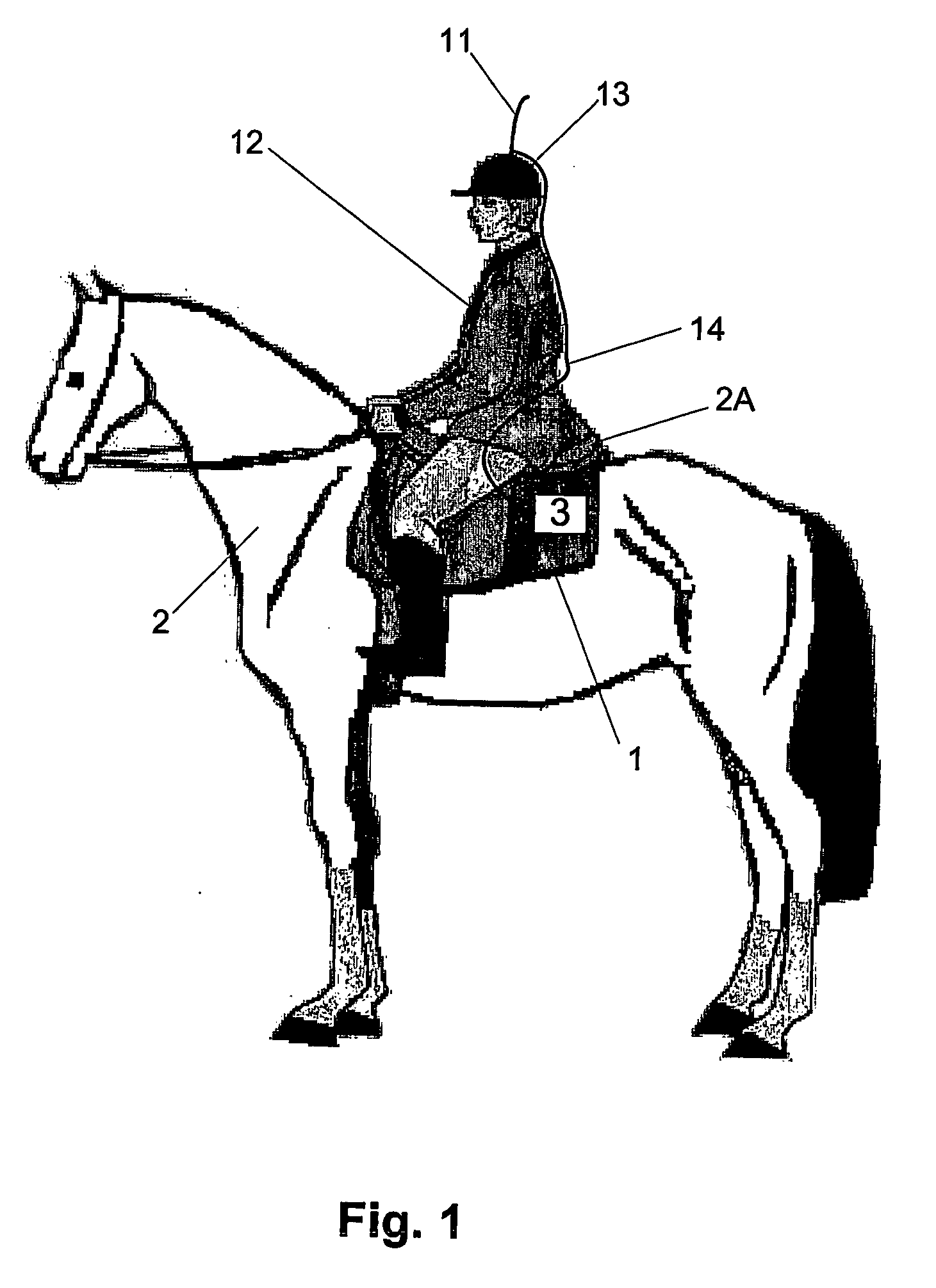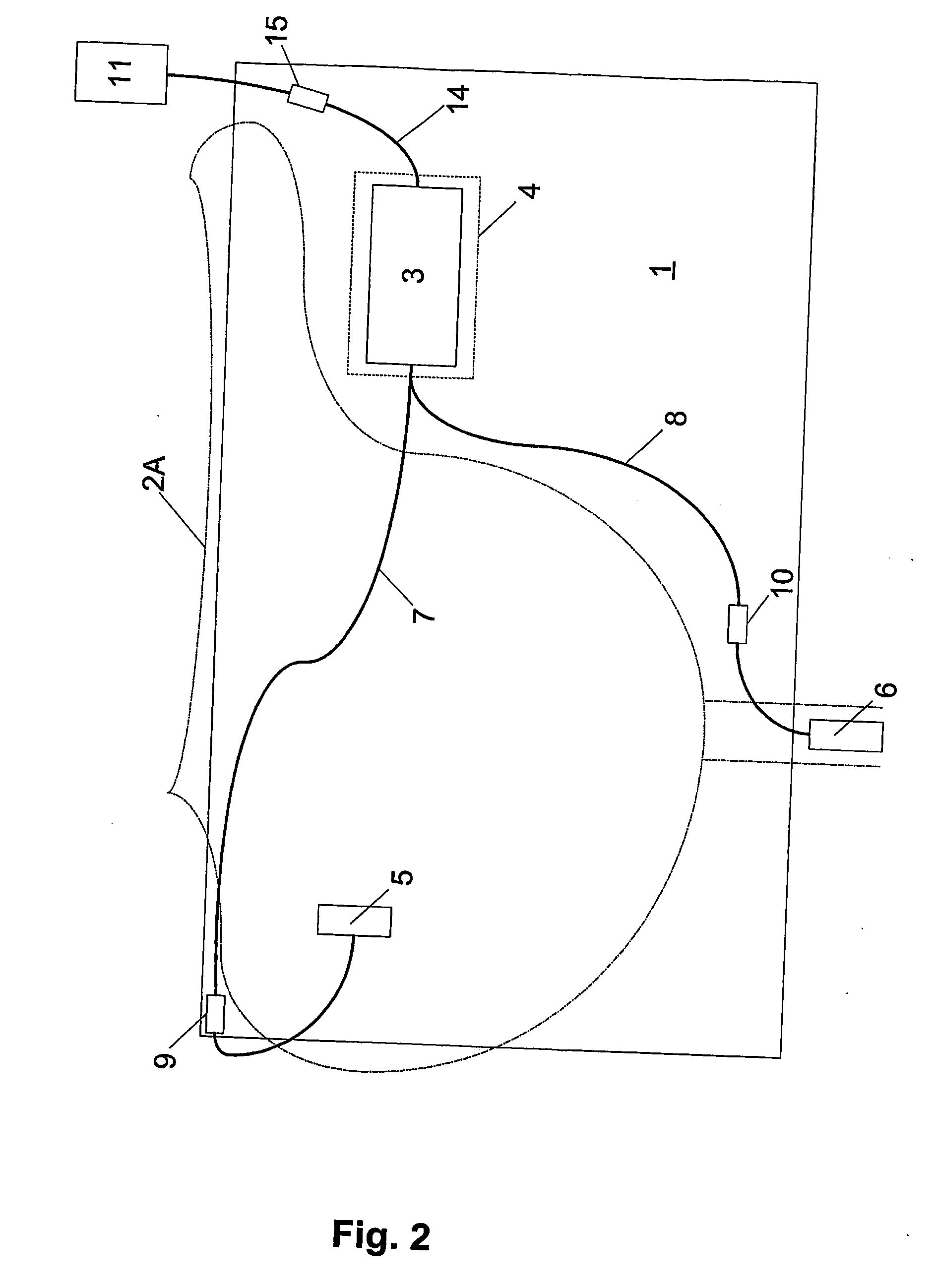Equine fitness monitoring
a technology for fitness monitoring and horses, applied in sport apparatus, medical equipment, medical science, etc., can solve problems such as unpredictable responses to acclimatisation, field studies usually do not take into account air resistance, and a number of problems
- Summary
- Abstract
- Description
- Claims
- Application Information
AI Technical Summary
Benefits of technology
Problems solved by technology
Method used
Image
Examples
specific example
[0191] In one example, recordings of heart rate and velocity during trotting on a sand track and gallops on a grass track were performed three times during a four week period in 8 Thoroughbred racehorses (3 geldings, 3 fillies and 2 colts; aged 2 to 4 years old).
[0192] Heart rates were recorded by Polar heart rate meters provided in a saddle blanket, with speed being measured using the GPS system, which can be used to calculate velocity with a speed accuracy: 0.36 kph. In this example, the blanket incorporates a 12 channel receiver interface to connect with a personal computer.
[0193] After inspection of the records of five-second averages of heart rate and velocity (0.2 Hz recordings) obtained during exercise, regressions of heart rate on velocity were constructed to derive V200.
[0194] The typical training exercise included 5 minutes trotting (mean trot speeds ranged from 4.1 to 4.6 m / s). After a brief period of walking, horses then galloped over 800-1000 metres on a grass track....
PUM
 Login to View More
Login to View More Abstract
Description
Claims
Application Information
 Login to View More
Login to View More - R&D
- Intellectual Property
- Life Sciences
- Materials
- Tech Scout
- Unparalleled Data Quality
- Higher Quality Content
- 60% Fewer Hallucinations
Browse by: Latest US Patents, China's latest patents, Technical Efficacy Thesaurus, Application Domain, Technology Topic, Popular Technical Reports.
© 2025 PatSnap. All rights reserved.Legal|Privacy policy|Modern Slavery Act Transparency Statement|Sitemap|About US| Contact US: help@patsnap.com



